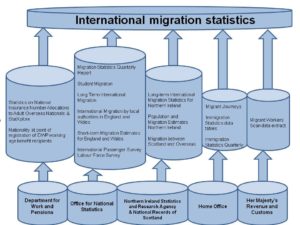“After the fears about post truth, we’ve now got the truth surge”.
So said Rupert McNeil, Civil Service Chief People Officer, to me at an event to launch the UK Statistics Authority’s consultation on the new Code of Practice for Statistics last summer.
We’ve now published the new Code itself. And I want to return to Rupert’s idea of a truth surge in the context of one of the great unsung features of the Civil Service. At the same time, I want to celebrate statistics as one of our quiet successes – and explain why we shouldn’t be so quiet about it.
We talk a good deal about the roles of the Civil Service – providing sound and honest policy advice to ministers, ensuring the public receive excellent services, and delivering value for taxpayers’ money.
There’s another crucial role that we talk about less: providing high quality and trustworthy data and statistics into the public domain.
These statistics are a crucial building block of how people make decisions about the world: for businesses, on where and how to invest, and which markets to develop; for individuals, on where to live and where to send children to schools; and for communities, on how to improve the quality of local life.
At the Office for Statistics Regulation all our work starts from recognising that statistics are a public asset. They are the lifeblood of democracy. And, as Anthony Hilton put in an Evening Standard article, they are as essential to public life as physical infrastructure like water or electricity.
The quiet triumph I want to celebrate is the capacity of the Civil Service to provide these clear, trusted data and official statistics to the public, regardless of the political colour of the party running government. These statistics cover a vast range of activity, from the health of the population, to the number of households below average income, via the performance of schools, the quality of the natural environment, and the disparity in outcomes between different groups in society.
Life and death, war and peace, crime and punishment – all human life is here. And it’s done with the rigour, integrity, and competence that are the hallmarks of a brilliant Civil Service.
Many countries would struggle with this. They only recognise as official statistics the data produced by their independent statistical offices (the counterparts of the Office for National Statistics – ONS).
So in many countries there are two or three providers of official statistics. Here there are over 150. Elsewhere in the world, the idea that a department run by an elected minister could produce statistics to the same standard as an ONS-like body, would be hard to imagine. In the UK, with our strong institutional framework for an impartial Civil Service, we take it as read.
It’s a testament to the strength of Civil Service values through the professionalism of individual civil servants and of their departments and agencies as institutions. As such, this reliable provision of statistics is part of the fabric of sound public administration.
This hasn’t happened by accident. It’s the result of the accumulated experience of generations of civil servants – statisticians, other analysts and policymakers.
The Code of Practice for Statistics captures this accumulated experience – it’s the go-to guide for any public organisation publishing statistics.
So why do I think this shouldn’t be a quiet success anymore?
We live in era of fear, of post-truth, spin and filter bubbles; where stories abound of fake news. It’s also a world of increasingly abundant data – but where it can be harder to sift the reliable from the unreliable.
In this world of scepticism, the ability of the Civil Service to provide statistics that are trustworthy, of high quality and publicly valuable is very important – to government and to society.
That’s why we have redesigned the Code of Practice to focus on the three pillars, or outcomes, Trustworthiness, Quality and Value, the core foundations of public confidence. It’s why we emphasise statistics not as an arid or technical subject but as a public asset and the lifeblood of democracy. The refreshed Code of Practice for Statistics can help you use data and statistics appropriately, whether you are working in policy, operations or statistics and analysis, view it here https://osr.statisticsauthority.gov.uk/code-of-practice/
And it’s why Rupert McNeil is right: we need a surge. We need to shout from rooftops that statistics are worth defending as one of the most crucial functions of government.
So, we think our new Code is not just the foundation of public confidence. It’s more than this: it is a celebration of statistics as one of the key achievements of the British Civil Service.


